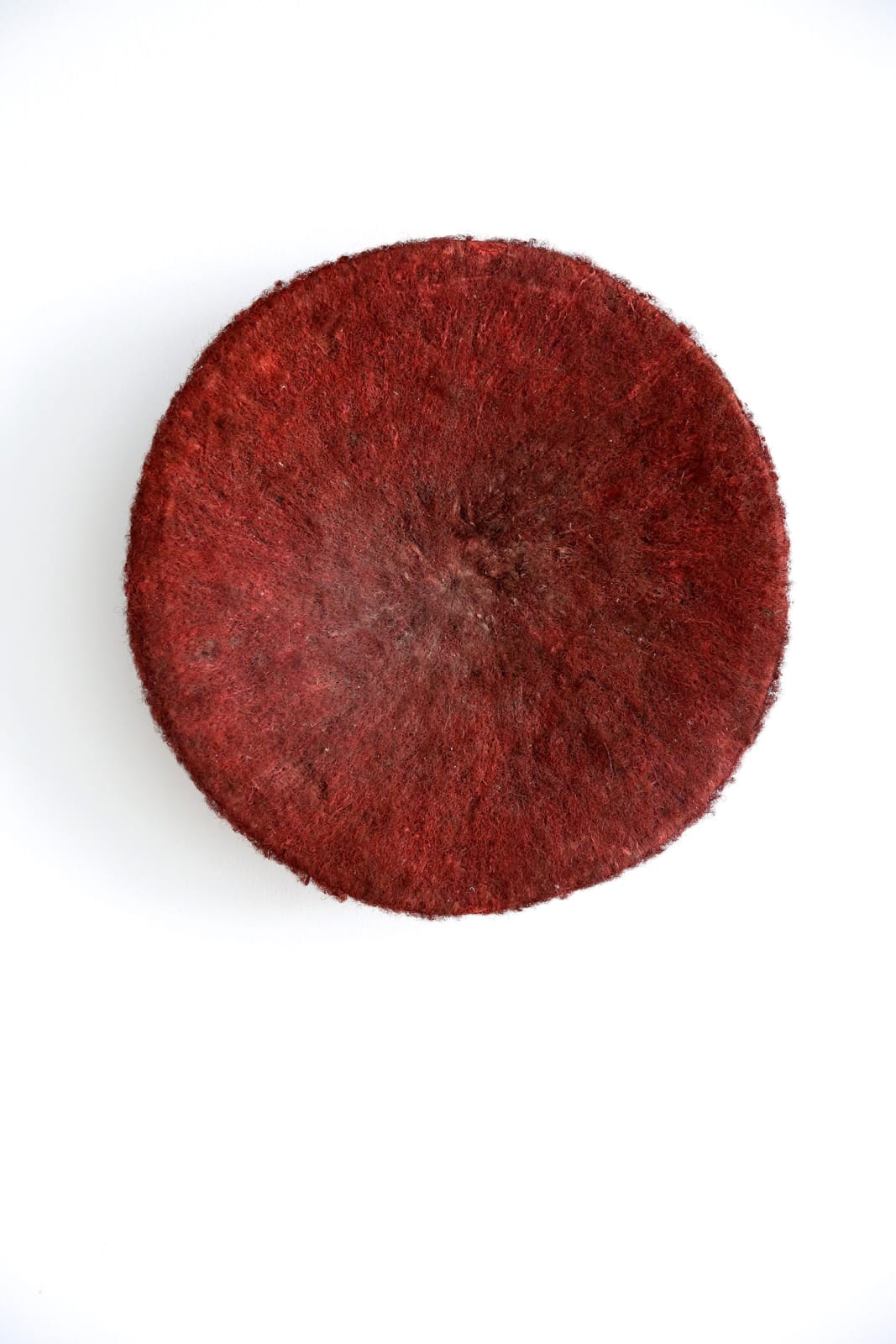Anonymous Zulu artist
Mid 20th century
Hair, fibers
17 3/4 x 2 in
In many African cultures, hats represent an extension of traditional hairstyles and can signify cultural, social, and personal meanings. The form of the isicholo, or married woman’s hat, developed out of a 19th century conical hairstyle that was worn as a sign of respect to one’s husband and his family, in addition to serving as a public symbol of married status. In the early 20th century, women started wearing removable hat like this one that mimicked the hairstyle instead of the coiffure itself. The hat could easily be removed at night and the advantage of this was it allowed a consistent form, without the necessity of incessant maintenance. This headdress, with its flaring disk-like shape, is constructed of a basketry foundation covered with colored human hair. More recent the concept of growing hair for the hat was discarded and substituted by weaving the form with fibers, grass, cotton or later string and fabric. A variety of hat styles were adopted in regional areas, coherent with the dress and beadwork of particular clans in that area. In the Msinga and Nquthu area, hat styles were marked by simplicity and often unadorned. The reddish hue - associated with beauty and femininity - is the result of the application of a red ocher and fat mixture colorant. While this is an older example Zulu women still wear sicholo on important occasions, especially in the Msinga district, the seat of the Zulu king, and they have become an icon of Zulu identity, even inspiring the costume designers of the Hollywood blockbuster “Black Panther”, when designing the headgear for Queen Ramonda.
Provenance
Justin Barthels, Maastricht, The Netherlands
By descent through family, 2022
Duende Art Projects, Antwerp, Belgium, 2022
let's keep in touch
Join our community & never miss out on a DUENDE moment from now on
* denotes required fields
We will process the personal data you have supplied to communicate with you in accordance with our Privacy Policy. You can unsubscribe or change your preferences at any time by clicking the link in our emails.



